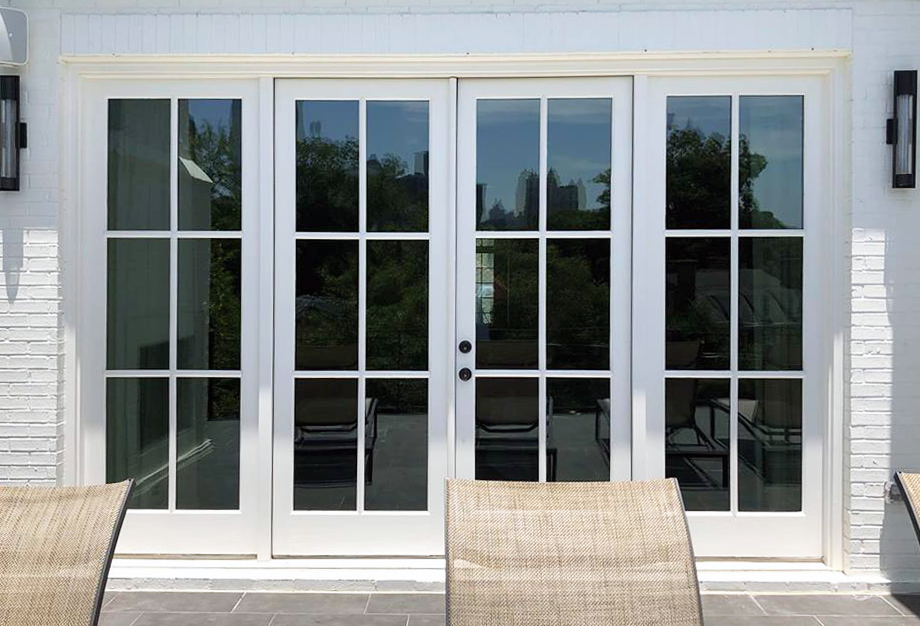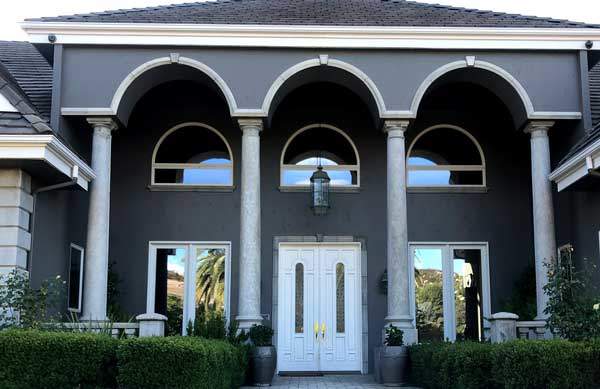Just How Residential Window Tint Can Decrease Power Bills
How Residential Home Window Tinting Enhances Your Home's Power Effectiveness
Residential window tinting provides an engaging service for house owners seeking to boost energy performance within their home. By applying specialized movies to windows, it effectively lowers warm transfer, consequently stabilizing interior temperature levels and lessening the need for too much home heating or air conditioning. This not only stops energy usage yet also supplies an extra comfortable atmosphere by reducing glow. Recognizing the nuances of just how tinting works and picking the ideal type for your home can be critical. Strangely enough, what elements should one take into consideration prior to making this investment?
Comprehending Window Tinting
Comprehending window tinting is essential for homeowners seeking to enhance both convenience and power efficiency in their home. Residential Window Tint. Window tinting includes the application of a thin film to the interior or exterior surface of glass home windows. This movie can dramatically modulate the amount of sunlight and warmth that gets in a home, hence affecting interior environment conditions
There are different kinds of window tinting movies available, each with distinctive homes. Dyed films absorb solar power, while reflective films deflect it away from the glass surface area. Ceramic movies use an equilibrium of visibility and heat denial, making them a prominent selection amongst homeowners. The performance of window tinting is frequently measured by its Visible Light Transmission (VLT) percent, which shows just how much light can pass through the movie.
Advantages of Energy Performance
Window tinting not just enhances appearances however additionally plays a considerable duty in improving power effectiveness within residential areas. By lowering warm transfer via windows, colored movies develop a much more stable indoor climate, which can bring about considerable reductions in energy intake for heating and air conditioning. This power efficiency equates into reduced utility bills, supplying property owners with considerable long-lasting financial savings.

In addition, home window tinting enhances the convenience of living spaces. By minimizing glow and obstructing damaging UV rays, tinted home windows develop an even more enjoyable setting, which can lead to enhanced wellness for owners. The security against UV rays likewise aids maintain furnishings and flooring from fading, adding to the durability of family products.
How Tinting Functions
Tinting films operate with a combination of sophisticated products and modern technologies made to control the amount of solar energy entering a home. Mainly composed of polyester, these films usually include metallic or ceramic fragments that absorb and mirror warmth. This twin capability enables them to considerably reduce the infiltration of ultraviolet (UV) rays and infrared radiation while allowing visible light to travel through.
The effectiveness of window tinting is gauged by its solar check these guys out warm gain coefficient (SHGC), which shows how much solar power is sent via the window. Reduced SHGC worths are preferable as they signify better warmth being rejected. In addition, window tints can feature a range of tones, enabling home owners to customize their aesthetic preferences while improving power efficiency.
In addition, these movies act as a barrier, avoiding warm loss throughout colder months by reflecting interior warmth back into the space. This thermal insulation effect matches the cooling benefits gotten during warmer months, adding to a balanced indoor climate year-round. By handling solar power efficiently, property window tinting not only boosts convenience yet additionally plays an essential find out here now function in minimizing power usage and reducing utility bills.
Selecting the Right Tint

There are different kinds of window films readily available, including dyed, metalized, and ceramic. Colored films are economical yet may have limited longevity. Metalized films supply better heat being rejected yet can interfere with electronic signals. Ceramic films give excellent warm control without jeopardizing presence and are very long lasting, making them a popular choice.
Noticeable light transmission (VLT) is an additional crucial element, as it suggests the amount of natural light that can travel through the tinted glass. Property owners must pick a color with a VLT that matches their illumination choices while still offering adequate glow see this reduction.
Additionally, assessing the solar warmth gain coefficient (SHGC) can aid determine just how well a tint can block heat from sunlight. A reduced SHGC shows far better warmth control, eventually improving energy efficiency.
Installation and Upkeep Tips
Appropriate installation and upkeep are crucial parts in making the most of the advantages of property window tinting. To attain ideal results, it is a good idea to hire a certified professional for installment. This makes certain that the color is applied correctly, staying clear of air bubbles, wrinkles, or imbalance that can compromise performance. Professionals additionally use specialized strategies and tools, which can boost the longevity and efficiency of the color.
Complying with setup, upkeep is important to extend the life of the home window movie. It is advised to wait at the very least 30 days prior to cleaning the colored windows to allow the adhesive to cure fully.
Dealing with these issues promptly can prevent more damages and preserve power performance. By adhering to these setup and maintenance tips, home owners can guarantee their window tinting proceeds to supply substantial power cost savings and comfort for years to come.
Verdict
To conclude, domestic window tinting works as an efficient service for boosting energy efficiency within homes. By lowering warm transfer and blocking unsafe UV rays, home window films add to lower power consumption and boosted indoor convenience. The choice of appropriate tinting products, along with proper installment and maintenance, better maximizes these advantages. Ultimately, window tinting stands for a sustainable financial investment that not only decreases utility expenses yet likewise advertises a comfortable living setting throughout the year.
Window tinting involves the application of a thin movie to the interior or outside surface area of glass home windows. By reducing warm transfer with home windows, colored movies create a more steady indoor environment, which can lead to substantial reductions in energy usage for home heating and air conditioning.The performance of home window tinting is measured by its solar warm gain coefficient (SHGC), which shows just how much solar power is sent through the window. By taking care of solar energy efficiently, property home window tinting not just improves convenience however also plays an essential duty in reducing power intake and decreasing energy costs.
By lowering warmth transfer and obstructing unsafe UV rays, home window movies contribute to lower power intake and boosted interior convenience.